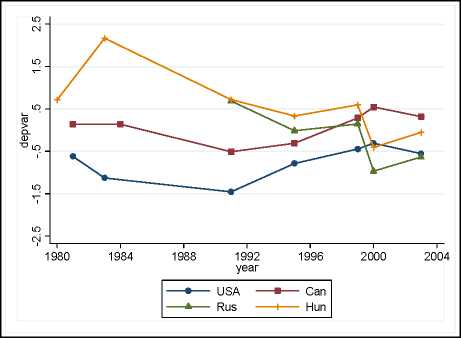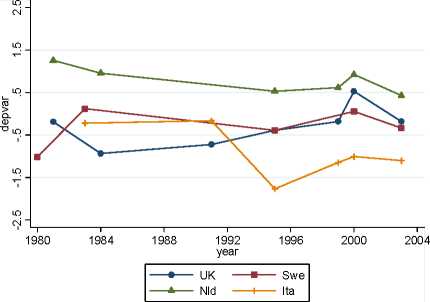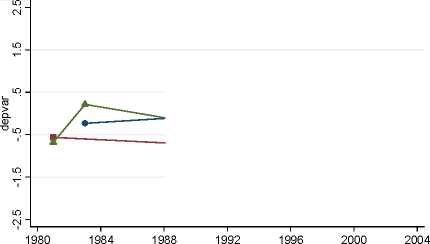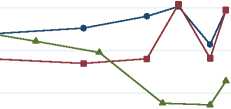share of adult population with at least some secondary education (EDU). Since we measure
GDP in per capita terms, we also employ population size (POP). Country-specific fixed
effects φi account for time-invariant differences between countries such as culture for
learning, risk aversion, but also school system characteristics, while time fixed effects φt
account for the fact that the independent variables have positive trends.11
Figure 2. Country specific development in relative student achievement.



year
Jap —■— Tha
Kor ---1--- HongK

Aus —■— Nzl
Isr

year
11 See Wossmann, 2003b, for an analysis of educational institutions and student performance. Notice that
including time-specific effects may influence the interpretation of the results, as we discuss later. The scaling of
the test scores makes the scores comparable over time so that, by including time fixed effects, the model in
essence draws inference on which other countries that participated on the different test and year. Thus, we also
report results where the time-specific effects are replaced by a simple trend.
10
More intriguing information
1. Reputations, Market Structure, and the Choice of Quality Assurance Systems in the Food Industry2. The name is absent
3. The name is absent
4. 03-01 "Read My Lips: More New Tax Cuts - The Distributional Impacts of Repealing Dividend Taxation"
5. The name is absent
6. Chebyshev polynomial approximation to approximate partial differential equations
7. Commitment devices, opportunity windows, and institution building in Central Asia
8. Dynamic Explanations of Industry Structure and Performance
9. IMPACTS OF EPA DAIRY WASTE REGULATIONS ON FARM PROFITABILITY
10. The name is absent